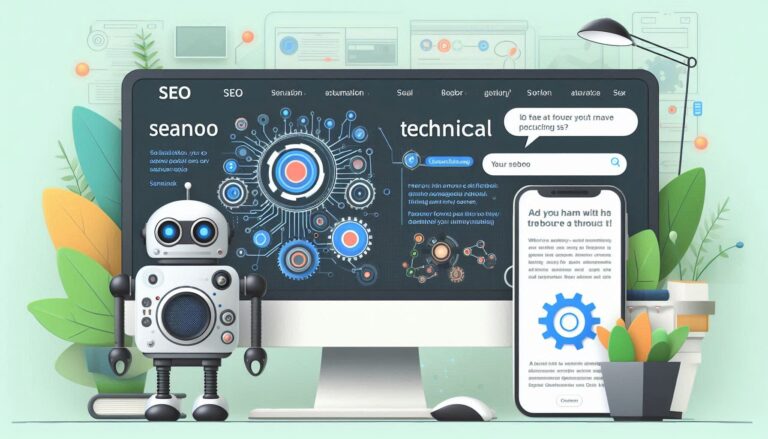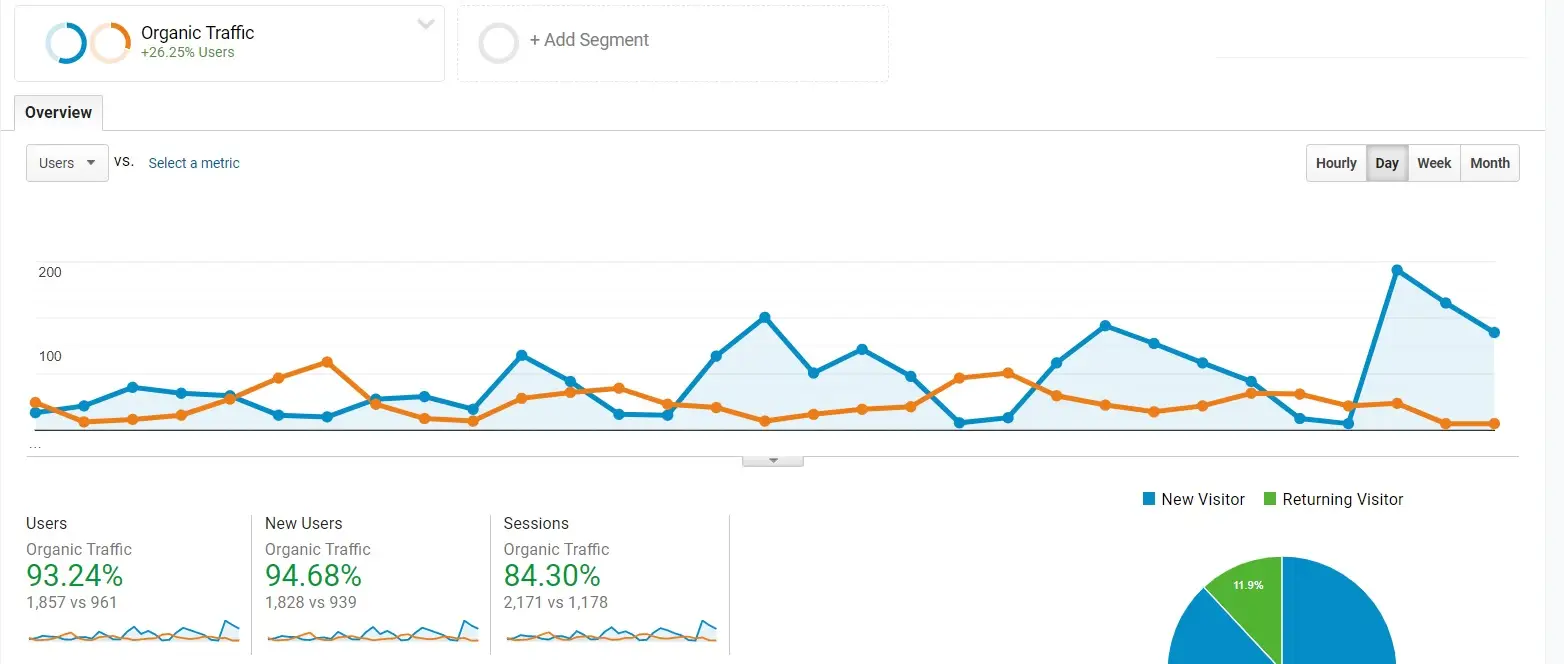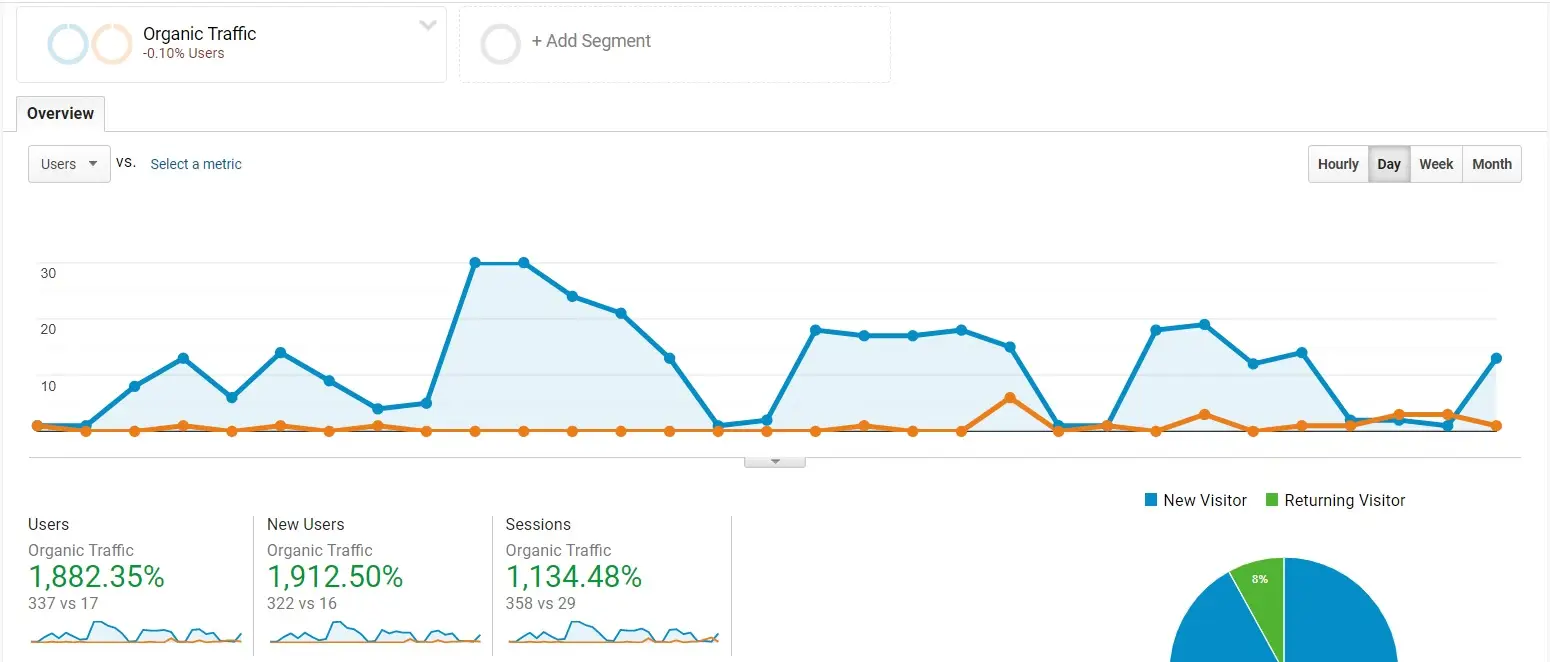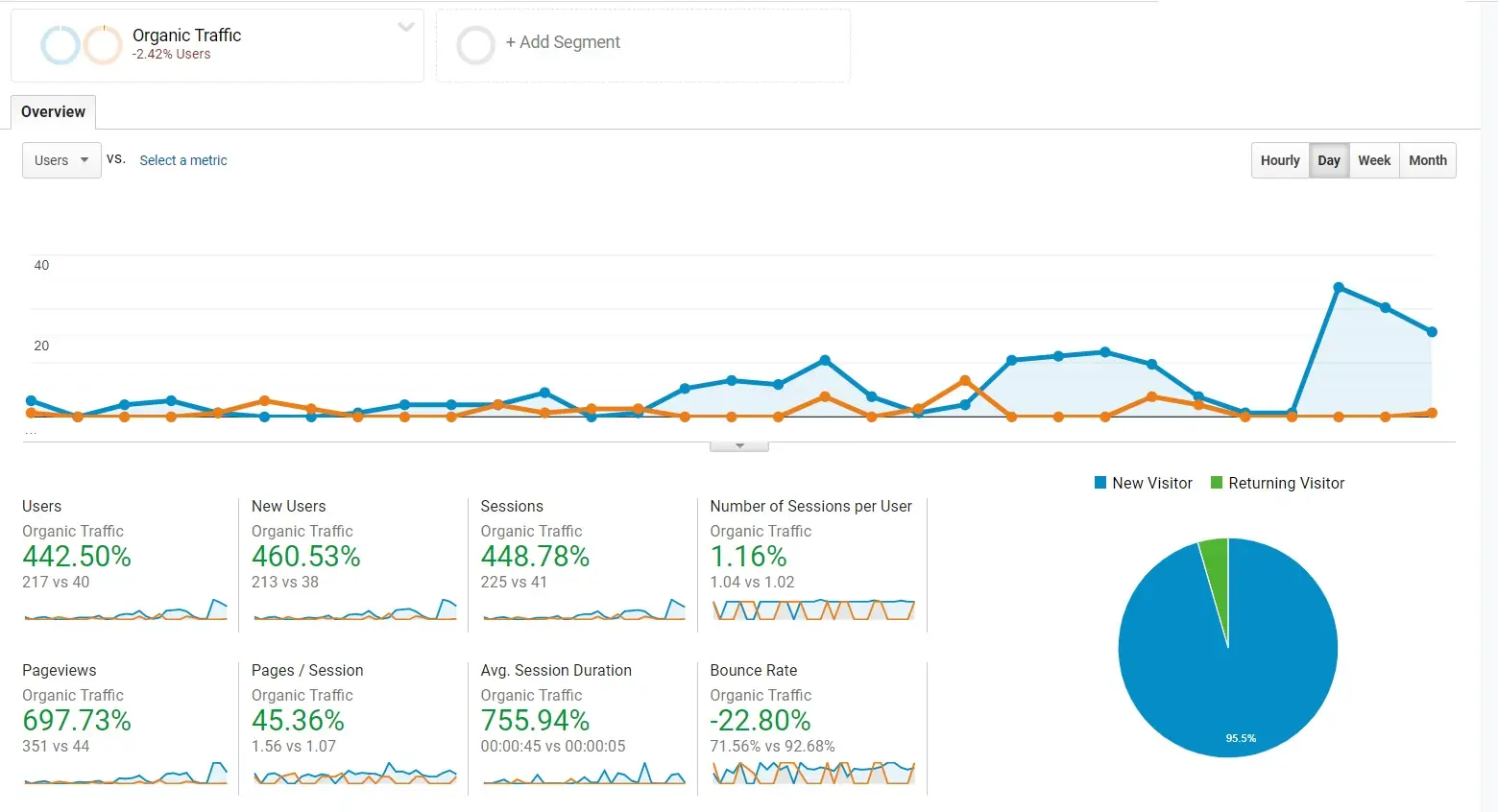Technical SEO Essentials: A Complete Guide for Website Optimization
In the vast ocean of the internet, making your website stand out is more critical than ever. Enter Technical SEO—an essential, yet often overlooked, component of search engine optimization that can significantly elevate your site’s performance and visibility. Imagine your website as a well-organized library; if the books (or pages) aren’t cataloged correctly, visitors won’t find what they’re looking for. This guide will dive deep into the importance of Technical SEO, its key elements, and actionable strategies to enhance your online presence.
Why Technical SEO Matters
Think of search engines like Google as highly intelligent librarians. They aim to provide users with the best possible resources in response to their queries. To achieve this, they crawl and index websites, assessing various factors like load speed and user experience. A website that’s not technically optimized may as well be a book shoved in a dark corner—no one will find it!
When technical elements are neglected, the consequences can be dire. A misconfigured sitemap might lead search engines to overlook critical pages, costing you valuable traffic. Ultimately, your goal should be to offer users a seamless, fast, and intuitive experience. This not only pleases visitors but also makes search engines happy, which can result in higher rankings.

Key Components of Technical SEO
1. Speed: The Need for Speed
In our fast-paced digital world, every second counts. Research shows that a significant percentage of users will abandon a site if it takes longer than four seconds to load. This means that slow loading times can not only frustrate visitors but also negatively impact your conversion rates. Google prioritizes faster websites in its rankings, making speed a pivotal factor for SEO. Tools like GTmetrix and WebPageTest can help you assess and boost your site speed. Remember, every millisecond counts!
2. Crawlability: Guiding the Bots
Search engines utilize bots to navigate and index your site, similar to how a librarian would explore a library. A well-structured internal linking system is crucial; it acts as a roadmap, guiding these bots to your most important pages. Additionally, configuring your robots.txt file correctly is essential. This file tells search engine bots which parts of your site to crawl and which to ignore. However, it’s vital to ensure you don’t inadvertently block crucial content that you want indexed.
3. Minimized Dead Links: Keeping It Smooth
Broken links can lead to user frustration and harm your SEO. They create a dead-end for users and can signal to search engines that your site is poorly maintained. Regularly checking for 404 errors and setting up redirects for deleted or moved pages will keep your user experience smooth and enjoyable. This proactive approach ensures that visitors can navigate your site without hitting roadblocks, which can significantly reduce bounce rates.
4. Avoiding Duplicate Content: Clear Communication
Duplicate content can confuse search engines, diluting your rankings. When search engines encounter multiple versions of the same content, they struggle to determine which one should rank higher. Implementing canonical tags can help indicate the preferred version of content, ensuring that search engines know which page to rank. This clarity is crucial for maintaining your site’s authority and search visibility.
5. Security: Building Trust
In a world where online security is paramount, a secure website is non-negotiable. Implementing HTTPS not only protects user data but also earns you favor with Google. A secure site is a trustworthy site, and trust leads to conversions. Visitors are more likely to engage with and share content from a site they perceive as safe, making security a key factor in user retention and engagement.
6. Structured Data: Organizing Information
Structured data is your secret weapon for helping search engines better understand your content. By using Schema.org markup, you categorize your information—like events, articles, or products—making it more likely to appear in rich snippets. Rich snippets enhance the visibility of your pages in search results and can lead to higher click-through rates, driving more traffic to your site.
7. XML Sitemap: Your Site’s Roadmap
An XML sitemap serves as a roadmap for search engines, outlining all your site’s pages. While a well-organized site might not strictly need one, having an XML sitemap ensures that all important pages are indexed. This is especially vital for larger sites with many pages, as it helps search engines discover and prioritize content more effectively.
8. Hreflang Tags: Going Global
If your website serves multiple regions or languages, hreflang tags are essential. They inform search engines which version of a page to show users based on their location. This helps mitigate potential duplicate content issues across different versions of the site. For businesses targeting international audiences, hreflang tags can significantly improve user experience and engagement by directing visitors to the most relevant content.

Strategies to Boost Your Technical SEO
Now that we’ve covered the essentials, let’s dive into actionable strategies you can implement to enhance your Technical SEO.
Structure and Navigation: The Foundation
A well-organized site structure is the backbone of effective Technical SEO. Aim for a flat structure where all pages are just a few clicks away from your homepage. This reduces orphan pages (pages that aren’t linked to from anywhere else) and makes it easier for both users and search engines to navigate your site. A logical hierarchy ensures that users can find information quickly, improving overall satisfaction and engagement.
Consistent URL Structure
Keep your URL structure clear and logical. For example, if you have a travel blog, categorize posts like this: /destinations/europe/paris. This enhances user navigation and relevance, making it easier for visitors to understand the content of your pages before they even click on them.
Breadcrumb Navigation
Implement breadcrumbs to improve user experience. For example, on a restaurant website, breadcrumbs like “Home > Menu > Appetizers” help users understand their location on your site, making it easier for them to explore. This feature not only enhances usability but also strengthens your internal linking structure, aiding in search engine navigation.
Addressing Indexing Issues
Use tools like Bing Webmaster Tools and Sitebulb to identify pages that search engines may struggle to access. Regular audits are essential to maintain a healthy index and ensure that all your valuable content is being recognized. This proactive monitoring helps you catch issues early and make necessary adjustments before they impact your rankings.
Internal Linking: The Web of Connections
Strategically interlink related content to enhance both user experience and search engine discoverability. If you run a fashion blog, for instance, link from a post about winter outfits to another on accessory trends. This not only keeps users engaged but also helps search engines understand the context and relevance of your content.
Optimize Page Speed
Speed is paramount, so focus on optimizing images, reducing HTTP requests, and improving server response times. Tools like GTmetrix can provide insights into how you can enhance your site’s performance. Consider implementing techniques such as lazy loading, where images load only when they are visible to the user, to further improve load times.
Mobile Usability
With Google’s mobile-first indexing approach, ensuring your site is mobile-friendly is no longer optional. Use tools like BrowserStack to test your site’s performance across various devices. A responsive design that adapts seamlessly to different screen sizes can significantly improve user experience and boost your rankings.

Best Practices for Technical SEO
- Use HTTPS: Make sure your site is secure for all users.
- Fix Broken Links: Regularly scan for and rectify broken links to maintain a positive user experience.
- Implement Structured Data: Use Schema markup to improve how search engines interpret your content.
- Noindex Category Pages: Consider noindexing category pages on blogs to avoid duplicate content unless they attract significant traffic.
- Utilize Hreflang Tags: Help international users find the correct version of your site.
Technical SEO: The Heart of Your Strategy
Technical SEO is foundational to a successful SEO strategy. If your website has significant technical issues, all your other SEO efforts will likely fall flat. A comprehensive technical SEO audit is typically one of the first steps in any SEO campaign, ensuring that your site is ready for further optimization.
Engaging in Technical SEO: Activities You Can’t Ignore
Technical SEO professionals undertake various activities to enhance site performance, including:
- Indexing and Accessibility Checks: Using tools like Bing Webmaster Tools to resolve any indexing issues.
- Crawling and Analysis: Employing tools such as DeepCrawl for in-depth site audits.
- Domain Management: Handling domain migrations and addressing redirects efficiently.
- Metadata Analysis: Identifying and resolving any metadata issues to bolster on-page SEO.
- Site Security: Implementing robust security measures to protect user data.
- Usability and Site Speed: Collaborating with developers to ensure a faster, more user-friendly experience.
Advanced Techniques for the Savvy SEO
For those looking to elevate their Technical SEO game, consider advanced practices such as:
- Page Speed Optimization: Tackle complex issues like image compression and server response time.
- Log File Analysis: Dive into server logs to uncover how bots interact with your site and pinpoint crawling issues. This analysis can provide valuable insights into which pages are being crawled effectively and which are not.
- Edge SEO: Implement edge caching techniques to reduce latency and speed up content delivery, enhancing the overall user experience.
Tools to Enhance Your Technical SEO
Equip yourself with the right tools to streamline your Technical SEO efforts:
- Google Search Console: Monitor site accessibility and indexing. This free tool provides valuable insights into how your site is performing in search results.
- Ahrefs Site Audit: Get a comprehensive overview of technical SEO issues. This tool can identify a wide range of technical problems that could hinder your site’s performance.
- Screaming Frog SEO Spider: Conduct detailed site analyses. This desktop crawler can help you uncover issues related to metadata, links, and much more.
- Lumar (Deepcrawl): Combine extensive data analysis with actionable insights. This enterprise-level tool is excellent for large websites needing in-depth audits.
- GTmetrix: Evaluate site speed and receive optimization suggestions. This tool offers insights into loading times and provides actionable recommendations for improvement.
A Career in Technical SEO
If you’re considering a career in Technical SEO, focus on developing these key skills:
- Technical Web Knowledge: Understanding website coding languages (like HTML, CSS, and JavaScript) and architecture. This knowledge is crucial for troubleshooting and implementing technical changes.
- Proficiency in Auditing: Enjoy the process of conducting thorough audits. Regular audits are essential for maintaining a healthy website.
- Knowledge of Security Standards: Familiarity with HTTPS and security best practices. Understanding these standards helps ensure user safety and builds trust.
- Experience with Structured Data: Understanding its role in enhancing visibility. Familiarity with Schema markup can significantly impact your SEO efforts.
- Analytical Skills: Ability to interpret complex data sets effectively. Strong analytical skills help you make data-driven decisions to improve site performance.
- Problem-Solving Abilities: Diagnose and resolve technical challenges efficiently. The ability to troubleshoot issues quickly is vital in maintaining a high-performing website.
- Communication Skills: Explain technical concepts to non-technical team members. Bridging the gap between technical and non-technical stakeholders is key in collaborative environments.

Conclusion
Technical SEO is the backbone of a successful online presence. By optimizing your website’s technical framework and addressing obstacles that hinder crawling and indexing, you set the stage for effective content creation and link-building efforts. With the right strategies and tools, you can dramatically improve your website’s performance, enhance user experience, and ultimately achieve better rankings in search results. Embrace the world of Technical SEO and watch your website soar!


